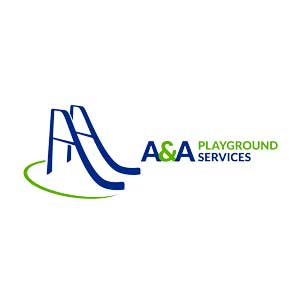The value of installation manuals
Before access to a newly installed playground is granted, installers should pull final inspections, do a walk-through with the owner, and give the owner all the documentation provided by the product manufacturer; including the maintenance kit and installation manual. In addition to other paperwork such as architectural drawings and warranties, playground owners should retain the installation manual. Many an installation manual finds its place under a growing pile of papers on a busy park director’s desk or on the floor in the corner of the park department’s maintenance shop. I would like to suggest an installation manual, when stored with future use in mind, become a valuable document to current and potentially future park staff.
Installation manuals contain the following vital information about your playground
- Name, address, and phone number of the manufacturer of the equipment.
- Job order number
- The manufacturer’s warranty
- Material specifications
- Construction or top-view drawings
- Footing layout and details
- Name and phone number of the local sales representative
- Checklist of playground parts shipped
- General playground construction information
- Tools require a list
- Playground safety information
- Maintenance instructions and master checklists
- Scale measurements
- Installation drawings and instructions for each specific component
- Identification of upright size, length, and placement
- A binder or carrier to keep the information organized
The technical drawings of the playground, found in an installation manual, are handy when replacing items under warranty—worn damaged, or defective parts. Referring to drawings made for this purpose is fast and accurate. The order number and date of installation is the first thing you will be asked for when calling a sales representative or manufacturer to get replacement parts.
During installation, it is imperative that installers follow directives in the installation manual. A playground is like a jigsaw puzzle of metal uprights and components, plastic panels and slides, and hundreds of pieces of hardware. Just where do all those parts go? Without an installation manual, you may as well be on a ship without a compass. From general safety notes that refer to use zones and safety surfacing materials to the actual placement of a play panel, misunderstanding the directions or failure to read them carefully can unintentionally cause a safety hazard. Even Material Safety Data Sheets that highlight installer’s safety while handling materials during installation are included. Installation manuals are not coffee table browsing materials, they are living documents that tell how your playground should be built and what to do to make sure it stays built that way.
The installation manual shows top-view drawings, line drawings of play equipment designed for a particular job site, and layout or footing detail instructions. Installers need to be able to compare blueprints provided by landscape architects as they relate to the top view and footing detail provided in the installation manual. This requires the skills of scale conversion to determine exact measurements. A seasoned installer should be aware that last-minute changes to either can change the scope of work. Suppose the drawings provided by a local architect do not match those in the installation manual. In that case, the owner may need to provide clarification—or the sales representative, general contractor, and architect may have to be brought in.
Here is an example of how the two sets of drawings may conflict with one another: the footing detail in the installation manual may call for holes for in-ground mount uprights to be 34 inches deep, but the installer arrives to find the architectural drawings call for 4 inches of gravel—when placed in the pit prior to installation makes the 34-inch deep footings only 30 inches deep. While accommodating such differences between the two sets of drawings, keep in mind, the directives in the installation manuals take precedence. This issue might be addressed by putting a 4-inch son-a-tube around each upright to make up for what you lack in depth. But if it deviates from the manufacturer’s specific directive, consult with the manufacturer before continuing installation.
An installation manual has a parts and hardware chart. Some manufacturers have only a handful of different types and sizes of nuts and bolts, while others require the use of dozens of different types and sizes of hardware. Installers keep organized when they refer to the installation manual to make sense of it all. By assigning one well-qualified crew member to handle the hardware, you can keep hardware from getting lost and inadvertently using the wrong hardware in the wrong place. Part numbers for components should correspond to the correct hardware number in the installation manual, and failure to follow directions may cause protrusion hazards and shortages of hardware.
Installation details, a vital part of an installation manual provide general component information and specific instructions the manufacturer wants the installer to know about the installation of that component. Playground equipment is never stagnant. Equipment manufacturers are always working to improve their instructions in order to teach new and better ways to erect their equipment. As more and more creative types of equipment are brought into existence, even veteran installers have something they can learn when it comes to reading installation details.
Manufacturers provide two sets of installation manuals. The second set should be retained by the installer. Having the manual and knowing where to find it comes in handy. Say the owner is building a new school and the principal plans to take his playground with him. Uninstalling and re-installing a playground without the installation manual is not a good idea. It may have collected some dust, but knowing where to find it saves time. You may even want to keep a color picture of the finished playground. It is a great way to identify what color replacement parts, if needed, should be.




















